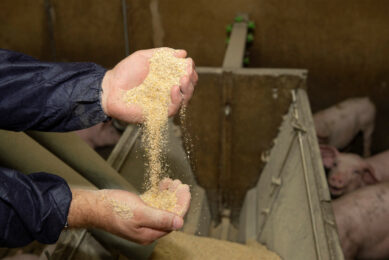The authorisation of feed additives in the European Union (EU) is regulated by European Regulation. The basic one in this, Regulation (EC) no 1831/2003, describes that companies that intend to put a new feed additive on the market have to submit an application by presenting a dossier. The first part of the evaluation of that dossier is done by the European Food Safety Authority (EFSA). EFSA performs risk assessments on such dossiers. The group within EFSA that deals with feed issues is called the “Panel on Additives and Products or Substances used in Animal Feed” (FEEDAP). The panel consists of experts from different European nationalities and different expertises in a range of relevant fields. These experts are supported by the EFSA Feed unit.
On the requirements for dossiers, the EU has set out a regulation no. 429/2008 to be regarded as rules for “the preparation and presentation of applications and the assessment and the authorisation of feed additives”. This regulation aims to present guidelines for the assessment on additives for animal feed in the EU and describes requirements that need to be satisfied by a dossier when an application for a new additive is done.This regulation describes what information needs to be provided in a dossier. This information can be divided into three major parts: on the identification and characterisation of the product, on the safety and on the efficacy.
Furthermore, it describes that there is flexibility on the kind of studies and information that needs to be provided, depending on the kind of product. Also other items play a role as well, e.g. when a product is already allowed as a food additive or when only used in pet food. The regulation should set out rules for the requirements as basis for the evaluation by EFSA. It is also mentioned that the involvement of laboratory animals should be kept to a minimum.
This regulation also replaces old guidelines for the assessment of additives in animal nutrition: Directive 87/153/EEC.
Renewed guidances
After a company has submitted a dossier, FEEDAP performs the assessment of risk assessment and it is also of their benefit to receive high quality dossiers that enables them to perform a thorough assessment. Therefore EFSA has set up guidances in the past that gives more details on the information that needs to be provided in a dossier. These guidances have been published, and focus on special parts of an application or on a type of application. These guidances act in addition to Regulation (EC) No 429/2008, but are not in the form of a regulation.
Just now, EFSA has released a number of renewed guidances:
- on zootechnical additives
- on nutritional additives
- on technological additives
- on sensory additives
- on additives already authorised in food
- on user safety
- on consumer safety
Enzymes efficacy requirement
People that are working on a registration have to carefully study what has changed. In the zootechnical guidance for example there is an important change in the efficacy requirements for enzymes. In the past for enzymes focusing on NSPs such as beta-glucanases and xylanases, it was necessary to demonstrate efficacy through at least three studies showing significant effects in performance parameters such as growth or feed conversion. According to the new guidance, it will also be accepted to show improvements in energy digestion in two digestibility studies. One long-term study showing a better performance needs to be added in addition. Previously, only long-term studies were accepted in such case.
The regulations also require that additives intended to be used in water, need to be registered for that application. This can be the case for different kind of feed additives. To show the efficacy of such products it does not matter to EFSA whether the efficacy is shown by application through water or through feed. For zootechnical additives however it is necessary to derive the minimum content in feed and water resulting in a significant effect.
Regarding the requirements for the identity of an additive, there are some small changes. Attention is given to maximum levels for solvents. Certain limits (as used in VICH Guidance GL18) should not be exceeded.
It is typical that requirements to provide information related to the physical state of each form of the product are different for different kind of additives. When comparing the guidances, it seems that if an additive is a technological, sensory or nutritional additive, an additive is less a concern than as being a zootechnical additive. This is remarkable because sometimes the same kind of product can be a zootechnical additive or another kind of additive. For example a micro-organism can be a silage additive, entering the animal alive and a zootechnical additive. Also organic acids are applied both as conservative agent and zootechnical additive.
Safety guidance
The guidance for the safety of additives for the consumer deals with studies concerning the safety for the consumer. Previously it was considered necessary – depending on the kind of additive – to perform an acute toxicity study. Also in other specific cases EFSA is more critical in the need to perform toxicity studies. To estimate the potential human exposure for an additive by consumption of animal products, EFSA had given previously a table that gave a theoretical intake of daily consumption of animal products. The values of this table were very high. In the new guidance EFSA has presented a more detailed table of intake of animal products, derived from “the EFSA Comprehensive European Food Consumption Database”. When estimating the potential intake, the applicant of a dossier can now choose from these two tables.
When an additive is already authorised in food, the assessment on the safety of the consumer may be a lesser issue in the dossier. The EFSA guidance on this topic has been adapted by some additional information. In more cases studies for users&workers with the additive will be required.
It is also realised for generic products that after authorisation, different formulations can be put on the market. Therefore for some additives, it is sufficient that the active component is of no concern related to the safety for users&workers. Still, it is necessary to show dust potentials in an application. The guidance for the assessment for sensory additives (colourants and flavouring compounds) contains several smaller adoptions.
Dealing with older information
When a company is preparing a dossier, it checks regulations and guidances for what information is considered necessary. For missing information, the company has to plan and perform studies which are often done at external institutes or universities. This often takes several months and easily up to a year, depending on the type of study (and available research capacity). As a result it may be the case that companies have information available that was set up according to older guidances. It is not clear how EFSA will deal with this, whether they will accept such data or whether they will stick to new guidances and require new information, which may imply new studies. It would be reasonable to accept studies which were initiated before the new guidelines, if they comply with the old guidances. Of course when there is an indication that safety is a concern, it would be understandable if EFSA would ask for additional information.
EFSA has renewed seven guidances at one time. They have given the older ones a critical review and made several changes. EFSA has not given reasoning for the changes, but some of them are well understandable. It is mentioned that validated alternative methods can be used to reduce the use of animals in toxicity studies. It is a pity that no new acceptable methods were named.
Although it has not been a fundamental revision, some of the changes have an important impact on the requirements to register a feed additive, leading to potential big differences in costs. Therefore the new guidances should be studied very well when registering a feed additive in the European Union.
*Regal B.V. (www.regal-eu.nl) is a consultancy specialised in the registration of feed additives. 












